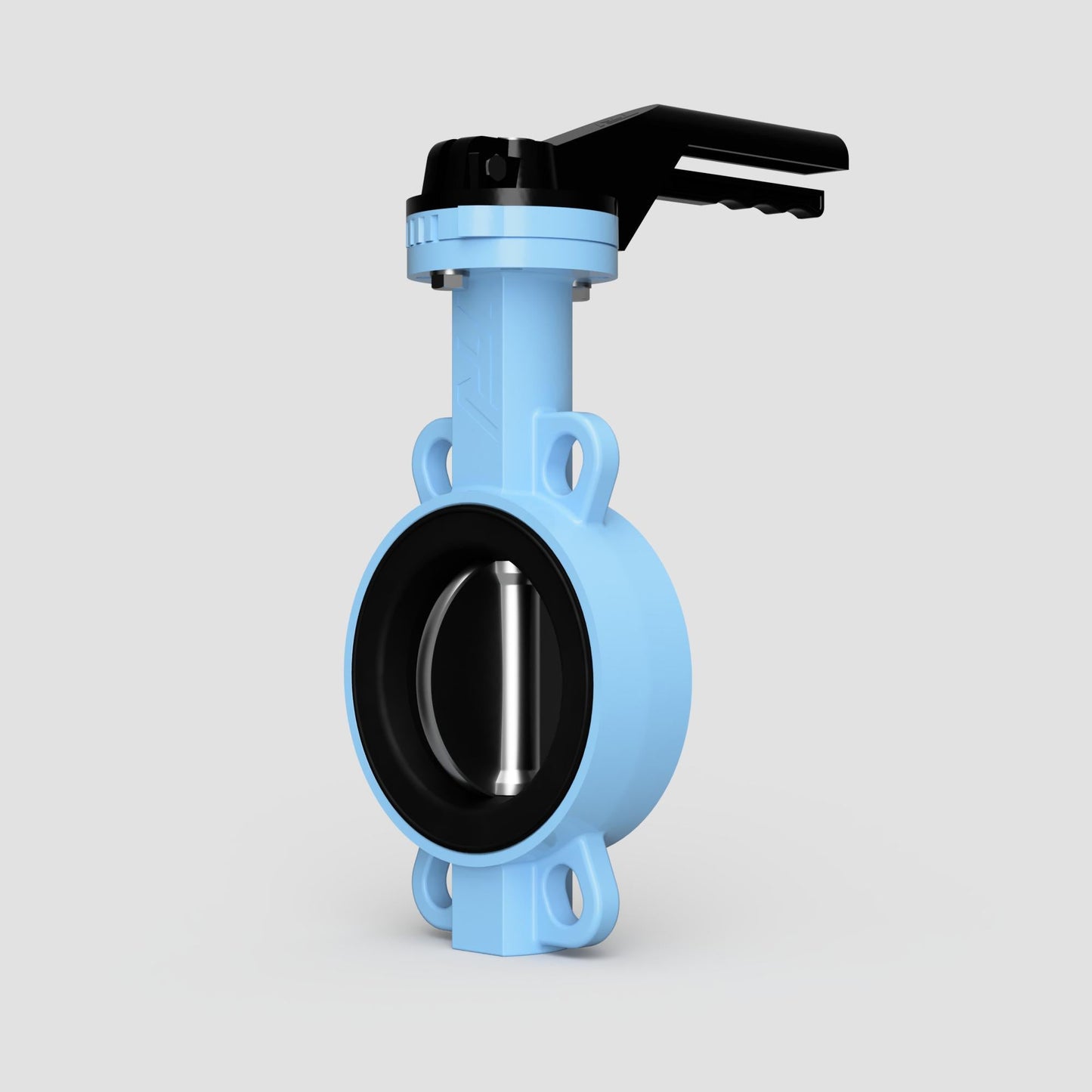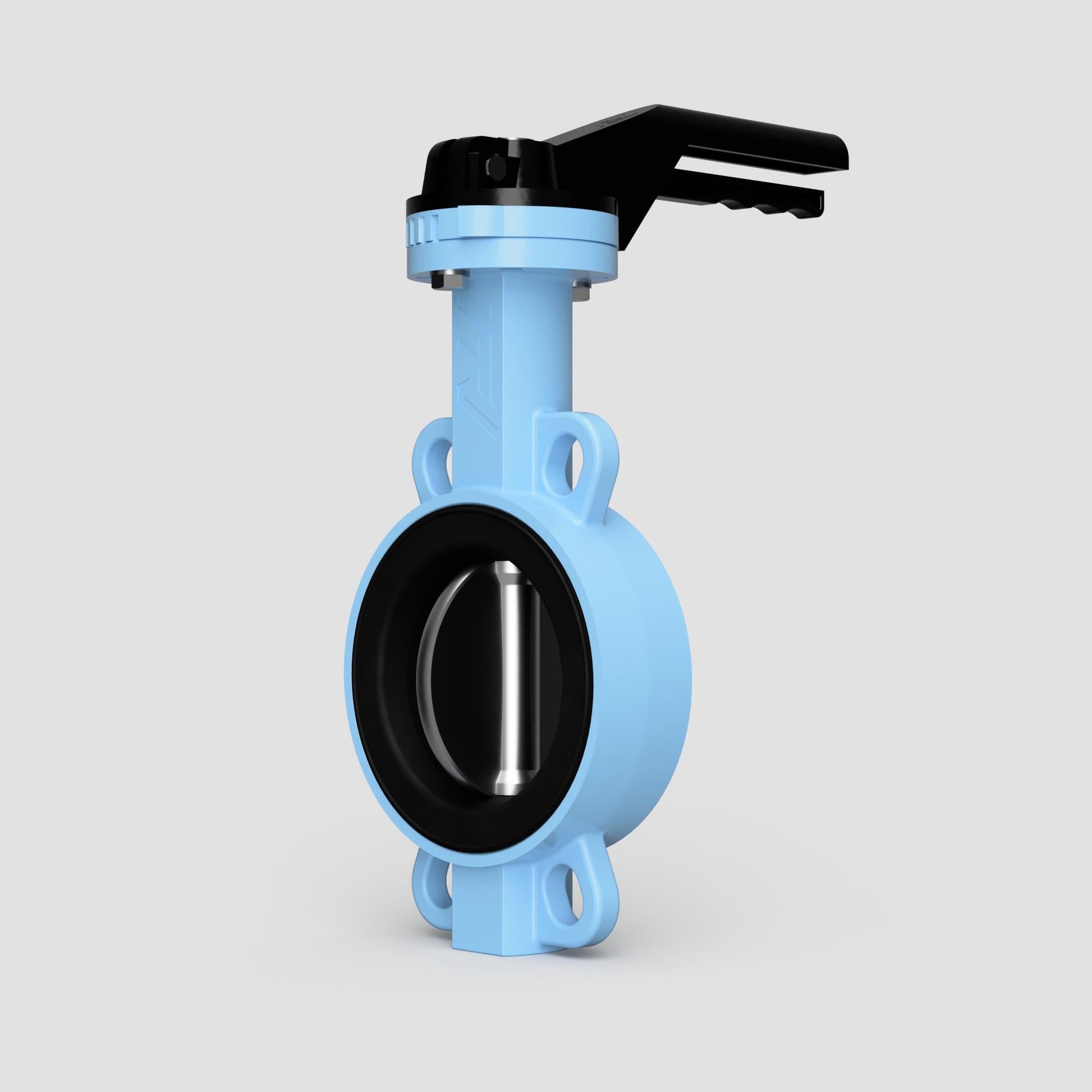Steam Valves
TTV Wafer Butterfly Valve - NBR Seat
TTV Wafer Butterfly Valve - NBR Seat
Couldn't load pickup availability
The Wafer Pattern TTV Butterfly Valve is a durable and versatile flow control solution, designed to perform reliably across various applications. Built with a PN16 pressure rating, this valve features a robust Ductile Iron GJS500-7 body, known for its excellent mechanical strength, corrosion resistance, and longevity, making it ideal for both industrial and commercial environments.
This model is fitted with an NBR (Nitrile Butadiene Rubber) seat, which provides excellent sealing properties and is well-suited for applications involving water, oils, and non-aggressive fluids. The NBR seat is particularly valued for its resistance to abrasion and its ability to perform under varying temperatures and pressures, ensuring a long-lasting and reliable seal.
The valve is designed for easy manual operation with a lockable lever mechanism, offering both convenience and security. The lever allows for precise control over the valve's position, while the lockable feature prevents unauthorised adjustments, enhancing safety and operational integrity in critical systems.
With its wafer-style design, this butterfly valve is compact and easy to install between flanges, saving space and simplifying installation in a piping system. Its streamlined profile ensures minimal pressure drop, optimising flow control and efficiency, making it an excellent choice for applications where space and performance are key considerations.
Ideal for use in water distribution, HVAC systems, and a variety of industrial processes, the Wafer Pattern TTV Butterfly Valve with an NBR seat combines durability, reliability, and ease of use, offering a cost-effective solution for a wide range of flow control needs.
Share

FAQ's
What is the difference between a valve and an actuator?
What types of actuators are available?
The main types of actuators are:
Pneumatic actuators – use compressed air for fast, reliable operation.
Electric actuators – use electrical power for precise control.
Hydraulic actuators – use fluid pressure for high-torque applications.
Each type offers unique advantages depending on the environment, media, and system control needs.
How do I choose the right actuator for my valve?
To select the correct actuator, consider:
Valve type and torque requirement
Power source available (air, electric, or hydraulic)
Operating environment (temperature, humidity, hazardous area)
Control signal type (on/off or modulating)
Matching actuator torque and compatibility with the valve’s ISO mounting ensures reliable performance.
What are the main types of valves used in automation?
The most common valves in automated systems include:
Ball valves – for tight shutoff and quick operation.
Butterfly valves – for larger flow control with compact design.
Globe valves – for precise throttling and flow regulation.
Check valves – to prevent backflow.
Gate valves – for full bore flow isolation.
What’s the difference between a double-acting and spring-return actuator?
Double-acting actuators use air (or power) to both open and close the valve.
Spring-return actuators use air to open (or close) the valve, and a built-in spring to automatically return it to a safe position when power or air is lost — ideal for fail-safe operation.
How often should valves and actuators be serviced?
Regular maintenance intervals depend on operating conditions, but a good rule of thumb is to inspect every 6–12 months.
This includes checking for leaks, lubrication, seal wear, and actuator responsiveness to prevent unexpected downtime.

